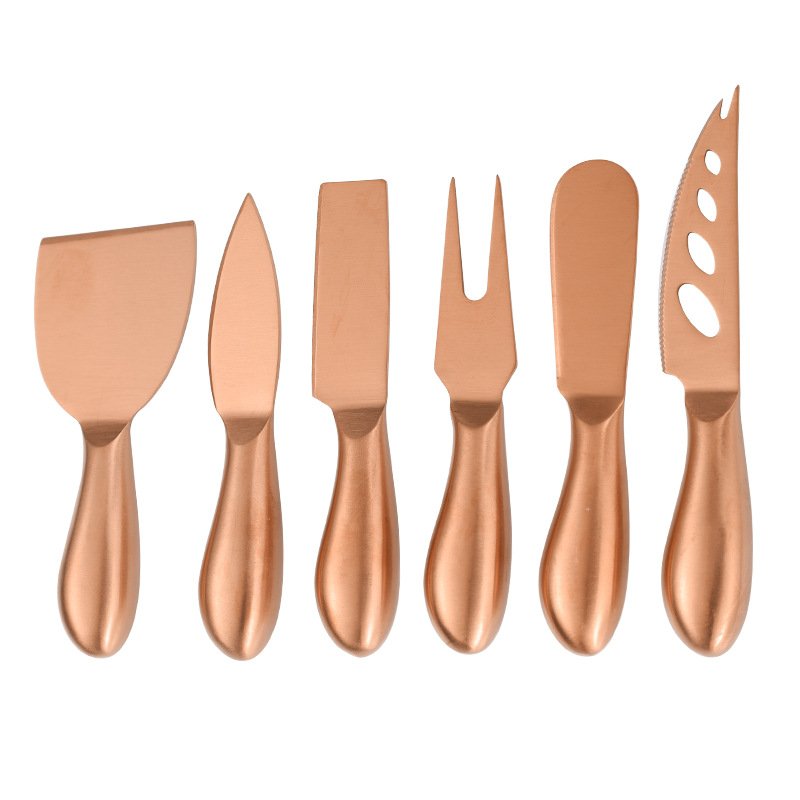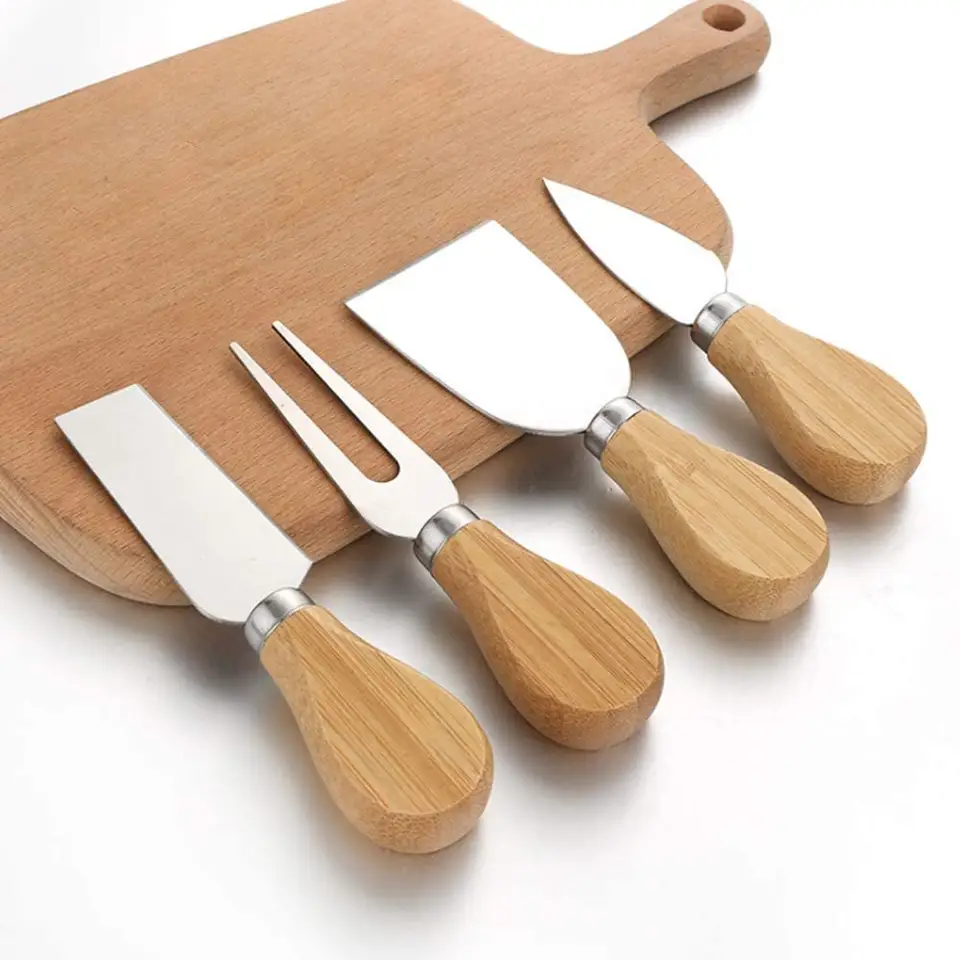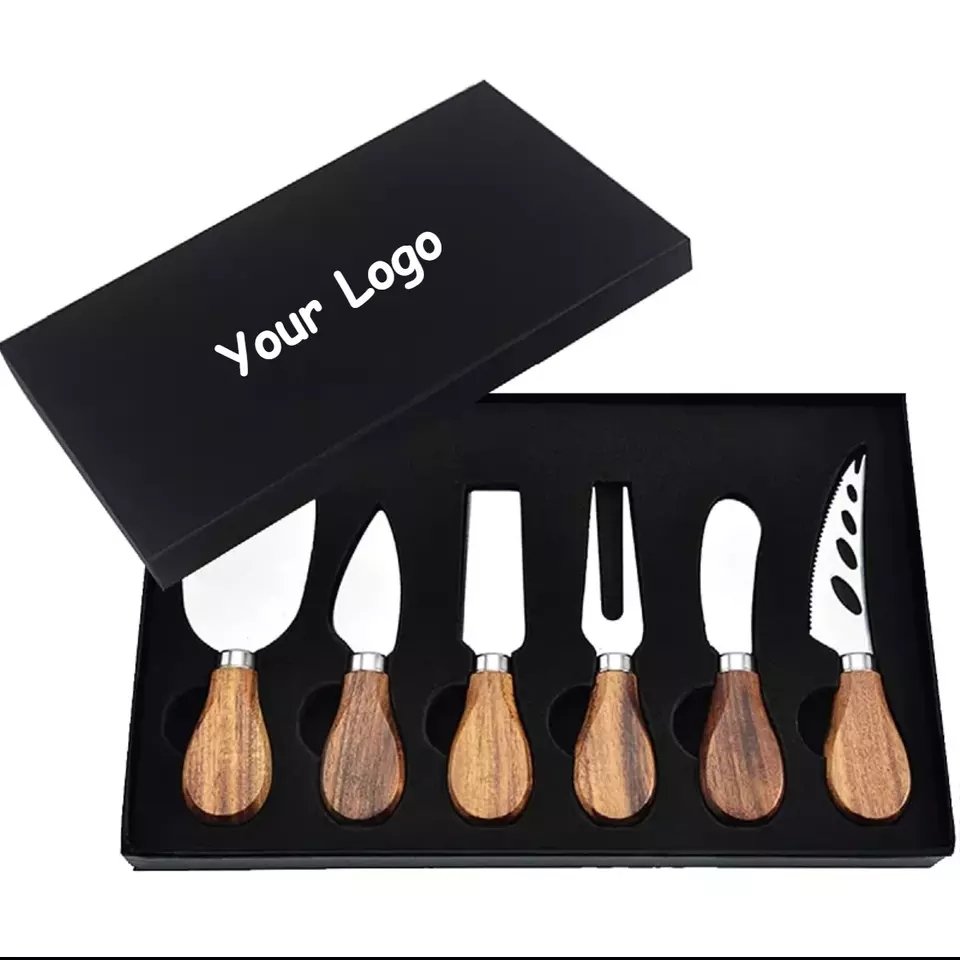Are adaptive utensils and cutlery really changing the way we eat? Let’s dive into how these innovations are making dining more accessible and comfortable for everyone.
Adaptive cutlery is designed to make eating easier for people with physical disabilities or limited dexterity. It focuses on ergonomics, materials, and special features that aid in functionality.
In this article, we’ll explore how adaptive utensils and cutlery are not only beneficial for those with disabilities but also for anyone looking for more comfortable and efficient dining tools. Read on to discover the different types and how they can be integrated into everyday life.
Table of Contents
What Are Adaptive Utensils and Cutlery?
How do adaptive utensils differ from regular cutlery? Let’s break down the design and features that make them stand out in the world of dining.
Adaptive utensils are specially designed to help individuals with physical disabilities or limited dexterity. They usually have ergonomic handles and sometimes offer modifications like built-in grips or angles to improve functionality.
Adaptive cutlery is designed with precision to cater to those who need it the most. It’s not just about making eating easier but also about enhancing the overall experience of dining for those with various conditions like arthritis, Parkinson’s disease, or even recovering from surgery.

What Makes Adaptive Cutlery Unique?
Adaptive utensils often feature soft, contoured handles that reduce the strain on the hands and fingers. Some designs focus on providing better control, which is particularly helpful for individuals who struggle with limited grip strength or coordination.
Here’s a quick look at some key characteristics:
| Feature | Description |
|---|---|
| Ergonomic Handles | Designed to fit comfortably and reduce hand strain. |
| Angled Designs | Helps users to hold utensils at a more natural angle. |
| Built-in Grips | Prevents slippage, especially for individuals with limited hand strength. |
| Lightweight Materials | Reduces the effort needed to lift utensils. |
These features make adaptive utensils much more than just tools; they offer a way for people with different abilities to regain independence and enjoy meals without struggle.
Material Choices for Adaptive Cutlery
The material used in adaptive cutlery is just as important as the design itself. Many manufacturers use lightweight materials such as titanium or high-grade stainless steel to ensure ease of use. Some materials are also non-slip, providing additional grip for users.
Adaptive cutlery often comes in a variety of finishes, which not only improve its functionality but also its aesthetic appeal. With customizable colors and designs, individuals can select utensils that suit their personal taste, making dining an enjoyable experience.
How Do Adaptive Utensils Improve Dining Experience?
Have you ever thought about how adaptive utensils could improve your dining experience? Let’s see how these innovations can benefit everyone, not just those with physical limitations.
Adaptive utensils aren’t just for people with disabilities. They are also great for anyone who wants a more comfortable dining experience. These tools are made to make eating easier and more efficient for everyone.
Adaptive utensils are not just for individuals with disabilities. In fact, anyone can benefit from these innovations. From people with arthritis to those recovering from surgery or even individuals who simply seek a more comfortable dining experience, adaptive cutlery offers versatility and ease of use.
Making Dining Comfortable for All
Adaptive cutlery can be particularly useful for individuals with limited hand mobility. However, it can also be beneficial for elderly individuals or even children who are still developing their coordination skills. The ergonomic design and adjustable features allow these utensils to cater to a wider range of people.
Who Can Benefit from Adaptive Cutlery?
| Group | Benefit of Adaptive Cutlery |
|---|---|
| Elderly | Easier to handle due to ergonomic and lightweight designs. |
| Children | Helps in the development of motor skills and confidence while eating. |
| People with Arthritis | Reduces strain on joints, making mealtime less painful. |
| Post-Surgery Patients | Facilitates easier eating while recovering strength and coordination. |
These utensils bridge the gap between individuals of varying abilities, allowing for a more inclusive dining environment.

What Are the Different Types of Adaptive Utensils?
Curious about the different types of adaptive utensils out there? Let’s explore the various kinds and their specific uses for those in need.
There are several types of adaptive utensils, including specialized forks, spoons, and knives. Each type is designed to assist in different ways, catering to individual needs.
Adaptive utensils are not limited to just a few types. In fact, there are many varieties designed for different needs. These utensils are often customized with specific features to make eating more manageable and enjoyable for people of all ages and abilities.
Types of Adaptive Cutlery
Adaptive cutlery comes in various forms, each catering to different needs:
1. Angle-adjustable utensils: These are particularly helpful for individuals with limited wrist movement. The angle of the utensil can be adjusted to suit the user’s preference.
2. Non-slip utensils: Made with materials that provide better grip, these are ideal for individuals with shaky hands or weakened muscles.
3. Weight-adjusted utensils: These utensils have added weight to help stabilize the user’s hand and provide more control during use.
Choosing the Right Type of Adaptive Cutlery
Here’s a comparison table to help you decide which type of adaptive utensil suits your needs best:
| Type of Utensil | Key Features | Ideal User |
|---|---|---|
| Angle-adjustable utensils | Adjustable angles for wrist movement | Users with limited wrist motion |
| Non-slip utensils | Grippy handles to prevent slipping | Users with shaky hands or weak grip |
| Weight-adjusted utensils | Extra weight for control and stability | Users with tremors or difficulty holding utensils |
Understanding the specific needs of the user can guide the selection of the most suitable adaptive utensils.
Adaptive Utensils for Eating
Do adaptive utensils really make a difference when it comes to eating? Let’s explore how these tools improve the overall dining experience for those who need them most.
Adaptive utensils are designed to help people with limited motor skills eat with greater ease and independence. These tools offer features like ergonomic handles, adjustable angles, and extra grip to make eating more manageable.
Adaptive utensils play a vital role in making eating easier for people with physical limitations, but they are also becoming a popular choice for those who simply seek more comfortable dining experiences. These utensils are designed to meet the needs of individuals who experience difficulties due to disabilities or aging, providing practical solutions to common eating challenges.
Key Features of Adaptive Eating Utensils
The design of adaptive utensils is centered around making dining simpler and more comfortable. Here are some of the features that make them effective:
1. Ergonomic Handles: These handles are specially shaped to fit the natural curve of the hand, reducing strain on the fingers and wrists. They are typically padded or made of soft, non-slip material to enhance grip.
2. Adjustable Angles: Some adaptive utensils allow users to adjust the angle of the handle or the head of the utensil. This feature helps people with limited wrist movement or those who have difficulty holding utensils at a standard angle.
3. Weighted Utensils: Some adaptive utensils have added weight, which can help users with tremors or shaky hands maintain better control while eating.
4. **Non-slip Surfaces**: The addition of non-slip surfaces or grippy handles ensures that the utensils stay in place during use, which is essential for people who struggle with coordination or strength.
| Feature | Benefits |
|---|---|
| Ergonomic Handles | Reduces hand strain and improves grip |
| Adjustable Angles | Provides flexibility for users with limited wrist movement |
| Weighted Utensils | Improves control for people with tremors |
| Non-slip Surfaces | Prevents utensils from slipping during use |
These utensils are transforming the dining experience by making it more accessible to those who might otherwise face difficulty eating independently.

Adaptive Utensils for Elderly
As we age, simple tasks like eating can become more challenging. Let’s dive into how adaptive utensils can make dining easier for elderly individuals.
Adaptive utensils can greatly benefit the elderly by improving their grip, reducing strain on their hands and wrists, and making mealtime more enjoyable. These utensils offer better control, stability, and comfort.
For elderly individuals, the challenges of eating are often heightened by conditions such as arthritis, limited hand strength, or diminished dexterity. Adaptive utensils specifically cater to these needs, providing tools that make everyday eating easier and more comfortable.
Benefits for the Elderly
The primary goal of adaptive utensils for the elderly is to restore independence during mealtime. These tools reduce the physical strain of holding and manipulating regular cutlery, making it possible for elderly individuals to eat without assistance.
1. Reduced Strain on Hands: Many elderly people suffer from arthritis or joint pain. Adaptive utensils with ergonomic handles can minimize the strain on their hands, allowing them to hold and use utensils for longer periods.
2. Improved Independence: With adaptive utensils, elderly individuals can enjoy meals without the need for constant assistance. This restores their confidence and autonomy, which can improve their overall well-being.
3. Better Control: Weighted or angled utensils help reduce shaking or loss of control, especially for those who may have tremors or poor coordination.
Key Features for Elderly Adaptive Utensils
| Feature | Benefits |
|---|---|
| Ergonomic Handles | Easier to grip and reduces hand fatigue |
| Weighted Utensils | Stabilizes the hand for better control |
| Angled Designs | Helps users with limited wrist mobility |
| Non-slip Handles | Reduces the risk of slipping during use |
By improving grip and comfort, adaptive utensils allow elderly individuals to maintain their dignity and independence while enjoying meals.
Adaptive Eating Utensils for Adults
Are adaptive utensils just for the elderly or people with disabilities? Not at all! These utensils can be a great choice for adults of all ages looking for a more comfortable dining experience.
Adaptive eating utensils for adults are designed to enhance the dining experience by offering features like ergonomic grips, adjustable angles, and added weight. These utensils can help anyone who wants to make mealtime easier and more enjoyable.
While adaptive utensils are often associated with children or the elderly, they are equally beneficial for adults who want to improve their dining comfort. Whether you’re recovering from an injury, dealing with arthritis, or simply looking for more user-friendly utensils, adaptive eating tools can make a significant difference.
Why Adults Should Consider Adaptive Utensils
Adults with limited hand strength or mobility challenges can benefit from the enhanced grip and stability offered by adaptive utensils. Furthermore, adults recovering from surgery or injuries may need tools that help them regain control of their eating habits.
1. Easier to Hold: Adaptive utensils are designed with ergonomics in mind, making them more comfortable and easier to hold than regular cutlery. This is especially helpful for adults with arthritis or carpal tunnel syndrome.
2. Better Control: Some adaptive utensils come with weight distribution features or non-slip surfaces to ensure that users can maintain better control, even if their hands are weak or shaky.
3. Post-Surgery Recovery: For adults recovering from hand or wrist surgery, adaptive utensils provide a way to maintain independence while eating, allowing them to regain confidence in their ability to manage basic tasks.
Types of Adaptive Utensils for Adults
| Type | Features |
|---|---|
| Ergonomic Forks/Spoons | Soft, contoured handles that fit the natural curve of the hand |
| Weighted Knives | Added weight for better control and stability |
| Angled Utensils | Adjusted to suit the user’s preferred angle |
| Non-slip Utensils | Provides a secure grip to reduce slipping |
These adaptive tools offer adult users the chance to dine with ease, whether for comfort, recovery, or better overall dining efficiency.
Adaptive Utensils for Autism
How can adaptive utensils help children or adults with autism? Let’s explore how these tools can create a more inclusive and manageable dining experience for those on the autism spectrum.
Adaptive utensils for individuals with autism are designed to help with sensory processing issues, improve motor skills, and provide a more controlled eating experience. These utensils can enhance focus and reduce mealtime anxiety.
Autism spectrum disorder (ASD) often comes with sensory sensitivities, which can make eating a stressful experience. Adaptive utensils help by addressing these challenges with features that reduce sensory overload and promote motor skills development.
How Adaptive Utensils Help Individuals with Autism
Children and adults with autism often experience heightened sensitivities to textures, tastes, and even the feel of utensils. Adaptive utensils are specifically designed to cater to these needs, providing tools that are gentle on the hands and easier to manipulate.
1. Sensory-Friendly Materials: Many adaptive utensils are made from materials that are soft and non-textured, which reduces the likelihood of sensory overload during mealtime. These features make the utensils more comfortable for individuals with heightened sensitivities.
2. Improved Fine Motor Skills: Adaptive utensils can be beneficial in developing or improving fine motor skills. Children with autism can use these tools to practice hand-eye coordination, grasping, and maneuvering objects, which are essential skills for daily living.
3. Reduced Mealtime Anxiety: Many individuals with autism experience anxiety during meals, especially when faced with unfamiliar textures or utensils. The familiarity and comfort provided by adaptive utensils can reduce stress and make mealtime a more enjoyable experience.
Features of Adaptive Utensils for Autism
| Feature | Benefits |
|---|---|
| Sensory-Friendly Materials | Soft, non-textured surfaces reduce sensory overload |
| Ergonomic Handles | Helps improve hand-eye coordination and grip |
| Non-slip Surfaces | Prevents utensils from slipping and enhances control |
| Weighted Tools | Provides stability for individuals with motor challenges |
With these specialized utensils, individuals with autism can feel more comfortable and confident during meals, making dining a more relaxed and enjoyable experience.
What Utensils Are Best for Elderly with Tremors?
Tremors can make even the simplest tasks, like eating, a real challenge for the elderly. But don’t worry—there are specific utensils designed to help manage this issue. Let’s explore the best options available.
For elderly individuals with tremors, utensils with weighted handles, non-slip grips, and ergonomic designs can significantly improve their dining experience. These tools provide better control and reduce the impact of shaking hands.
Tremors, especially those associated with conditions like Parkinson’s disease or essential tremor, can make eating with regular utensils difficult. The right adaptive utensils can help the elderly regain their independence and enjoy meals with less frustration.
Key Features to Look for in Utensils for Tremors
When choosing the best utensils for seniors with tremors, it’s important to focus on features that provide better grip, stability, and control. These tools can make mealtime much easier and less stressful.
1. Weighted Handles: One of the most effective features for controlling tremors is a weighted handle. The added weight helps stabilize the hand, reducing the effects of shaking and providing a steadier grip. This feature is particularly beneficial for individuals with Parkinson’s disease.
2. Ergonomic Design: Utensils with ergonomic handles are designed to fit comfortably in the hand, reducing strain and making it easier to hold them securely. These utensils often have soft, contoured grips that prevent slipping and make them more comfortable to use.
3. Non-slip Grip: Non-slip materials or soft-touch grips can enhance the control of the utensil, especially for people who experience shaking or weakness in their hands. The grip prevents the utensil from slipping out of the user’s hand, ensuring more stability during mealtime.
4. Angled and Adaptive Utensils: Some adaptive utensils are designed with angled heads, which help compensate for limited wrist mobility or reduce the strain of holding a utensil at an awkward angle. These utensils can make eating easier by offering a more natural and comfortable grip.
| Feature | Benefits |
|---|---|
| Weighted Handles | Reduces the effect of tremors and adds stability |
| Ergonomic Design | Fits comfortably in the hand, reducing strain |
| Non-slip Grip | Prevents utensils from slipping and improves control |
| Angled Utensils | Provides a natural grip for limited wrist mobility |
These adaptive utensils are an essential tool for elderly individuals with tremors, helping them maintain their independence during meals.

What Should I Eat if My Hands Are Shaking?
When your hands are shaking, eating can become a tricky task. But certain foods and meal strategies can make eating easier and more enjoyable. Let’s explore some options to help manage this challenge.
If your hands are shaking, it’s best to eat foods that are easy to handle, such as finger foods or dishes that require less precision. Using adaptive utensils can also help ensure a smoother eating experience.
Shaking hands, whether due to medical conditions or other factors, can make mealtime feel frustrating. But there are various ways to adjust your diet and eating habits to minimize the challenges that come with tremors.
Foods That Are Easier to Eat
Certain types of food are easier to eat with shaking hands. Here are a few recommendations that can make eating a lot less stressful:
1. Finger Foods: Foods that can be eaten with fingers, such as sandwiches, fruit slices, or small snacks, are ideal for those with tremors. These foods are less likely to be spilled or dropped, which helps reduce the stress of eating.
2. Thickened Liquids: If you have trouble holding a cup steady, thickened liquids or soups can be a good choice. These liquids are less likely to spill and are easier to drink from a cup or bowl.
3. Soft Foods: Soft foods, like mashed potatoes, smoothies, or yogurt, are easier to scoop with utensils and don’t require much precision to eat. These foods are particularly helpful for individuals who may struggle with utensils slipping due to trembling hands.
4. Cut into Smaller Pieces: Larger portions of food can be difficult to handle, so cutting food into smaller pieces can make it easier to pick up with utensils or fingers. This reduces the need for precision and makes it less likely that food will fall.
Meal Strategies
In addition to food choices, there are also strategies that can make mealtime easier for those with shaking hands:
1. Use Adaptive Utensils: As we’ve discussed earlier, using adaptive utensils like weighted forks and spoons can help stabilize the hands and make it easier to hold the utensils.
2. Use a Stable Eating Surface: Eating at a stable surface, like a non-slip plate or a tray, can reduce the likelihood of accidents. It helps keep your food in place, making it easier to eat without spilling.
3. Avoid Hot or Steamy Foods: Foods that are too hot or produce steam can increase the chances of accidents, especially if you have trouble controlling your hand movements. Stick to foods that are at a safe and manageable temperature.
| Feature | Benefits |
|---|---|
| Weighted Handles | Reduces the effect of tremors and adds stability |
| Ergonomic Design | Fits comfortably in the hand, reducing strain |
| Non-slip Grip | Prevents utensils from slipping and improves control |
| Angled Utensils | Provides a natural grip for limited wrist mobility |
By adjusting your food choices and meal strategies, eating can become a much more manageable task, even with shaking hands.
How Do You Use Adaptive Cutlery?
Adaptive cutlery can be a game changer for individuals facing challenges during meals. But how exactly do you use these utensils to their fullest potential? Let’s walk through the process of using adaptive cutlery effectively.
Using adaptive cutlery is all about comfort and control. These utensils are designed to make mealtime easier by offering improved grip, stability, and flexibility. Here’s how you can make the most of them.
Adaptive cutlery is designed to make eating more accessible for people with limited hand strength, dexterity, or coordination. But simply having the right tools isn’t enough—learning how to use them effectively is key to getting the most out of these utensils.
Steps to Using Adaptive Cutlery Effectively
Here are some practical steps to help you use adaptive cutlery to its full potential:
1. Choose the Right Type of Adaptive Cutlery: Depending on your needs, you may need a utensil with a weighted handle, an ergonomic grip, or an adjustable angle. Choosing the right tool will depend on your specific condition—whether it’s tremors, arthritis, or limited wrist mobility.
2. Hold the Cutlery Correctly: Adaptive cutlery is often designed to be easier to grip, but it’s still important to hold the utensil in a way that maximizes its effectiveness. Make sure your grip is relaxed and firm enough to prevent the utensil from slipping. Avoid gripping too tightly, as this may cause strain.
3. Adjust the Angle: Many adaptive utensils have adjustable angles that allow you to customize the utensil’s position for comfort. If your wrist mobility is limited, adjusting the angle can help you hold the utensil in a more natural position, making it easier to scoop and cut food.
4. Use Non-slip Plates or Trays: Pairing adaptive cutlery with non-slip plates or trays can help ensure that the food stays in place while you eat. This is especially helpful for people with tremors or those who struggle with food stability.
5. Practice and Patience: Using adaptive cutlery effectively may take some practice. It’s normal to feel a bit awkward at first, but with time, you’ll become more comfortable with these tools.
Benefits of Using Adaptive Cutlery
| Step | Benefits |
|---|---|
| Choosing the Right Cutlery | Ensures the tool meets your specific needs |
| Holding the Cutlery Correctly | Reduces the risk of dropping the utensil |
| Adjusting the Angle | Helps improve comfort and wrist positioning |
| Using Non-slip Surfaces | Prevents food from sliding and reduces accidents |
Adaptive cutlery is a simple yet effective solution for making mealtime easier, providing greater independence and comfort. With the right technique and tools, anyone can enjoy eating without stress or frustration.





